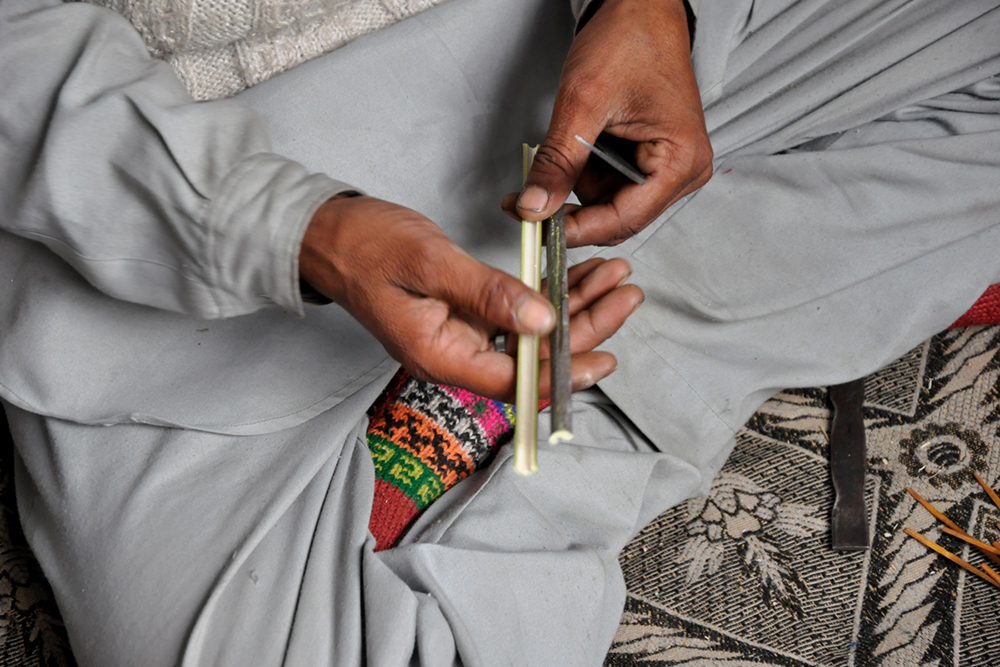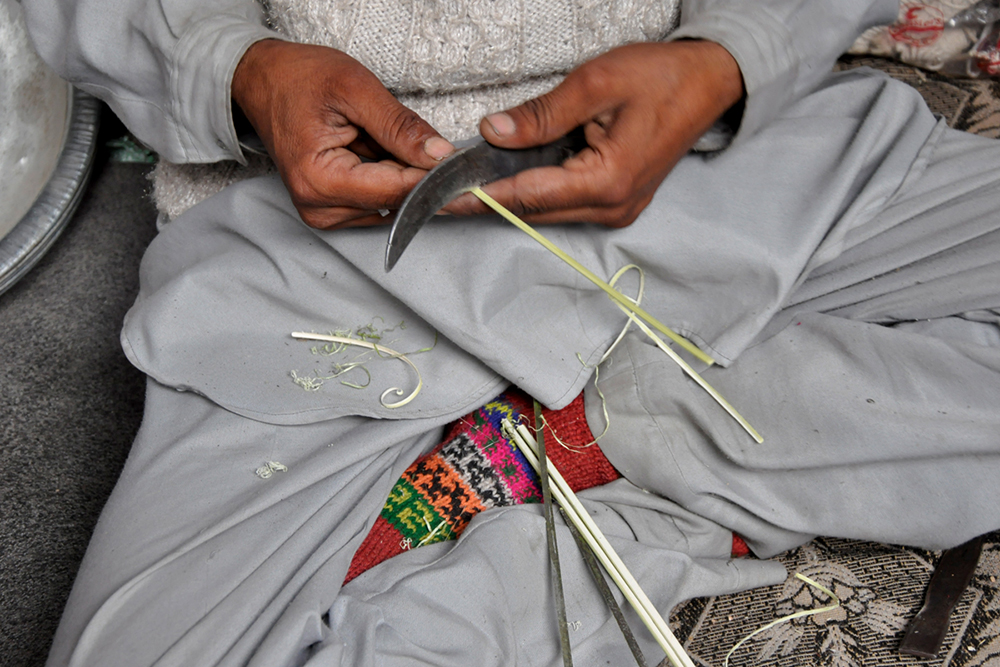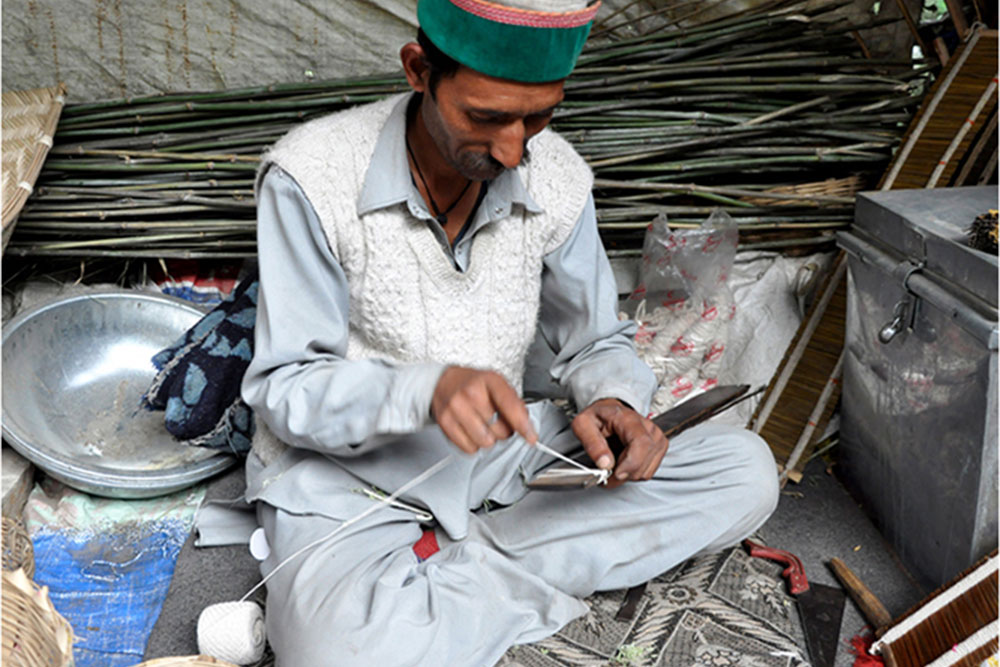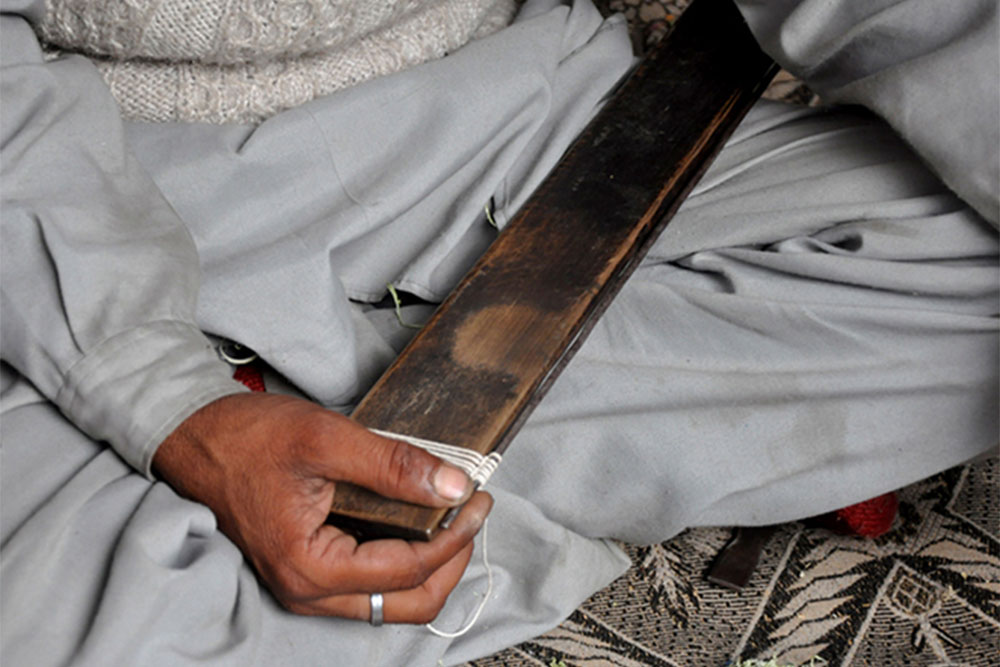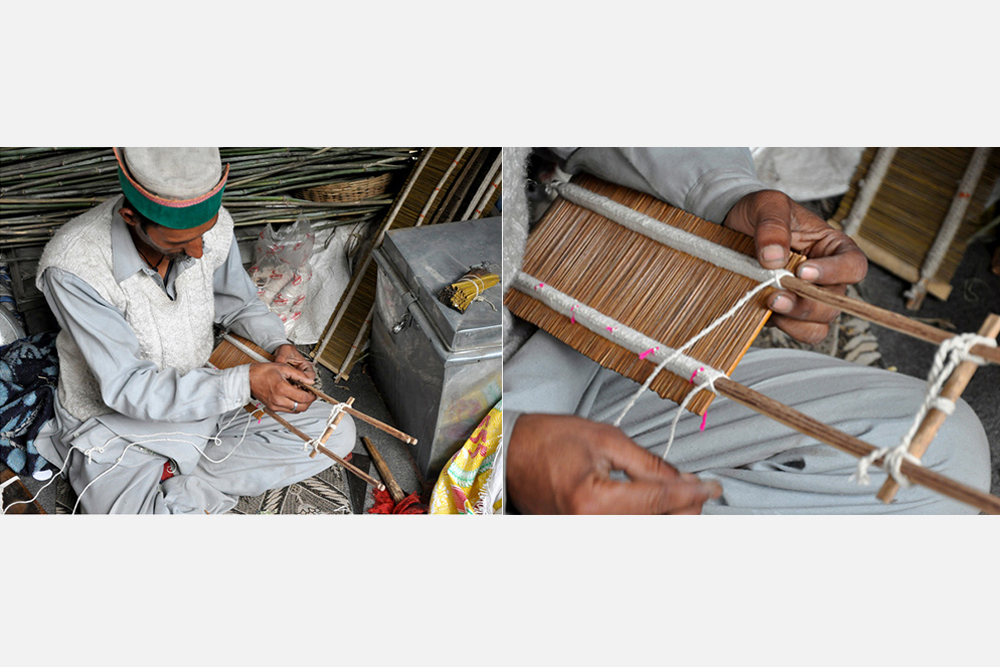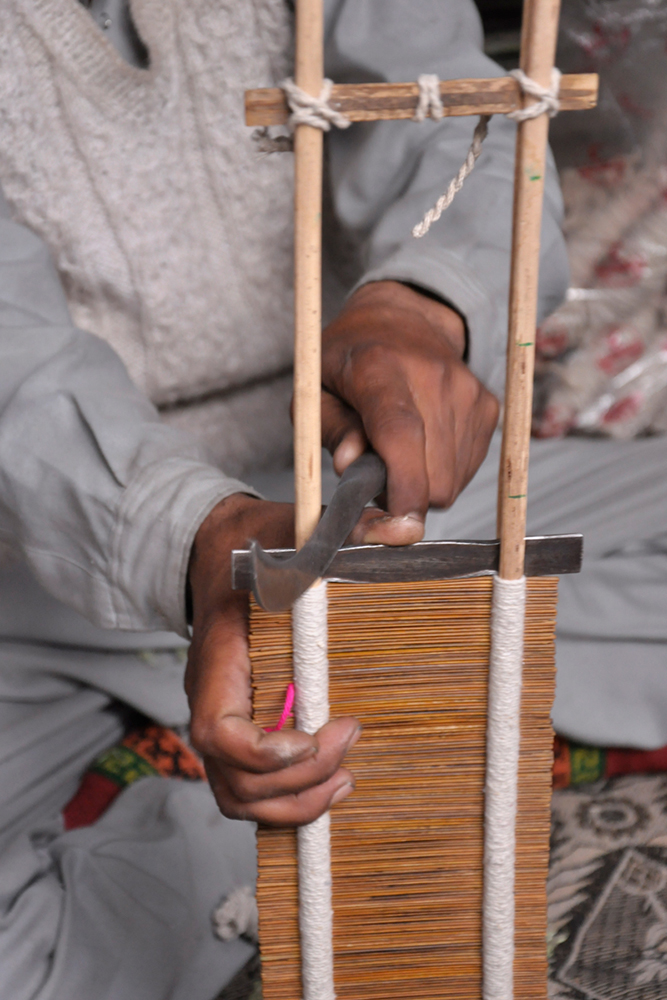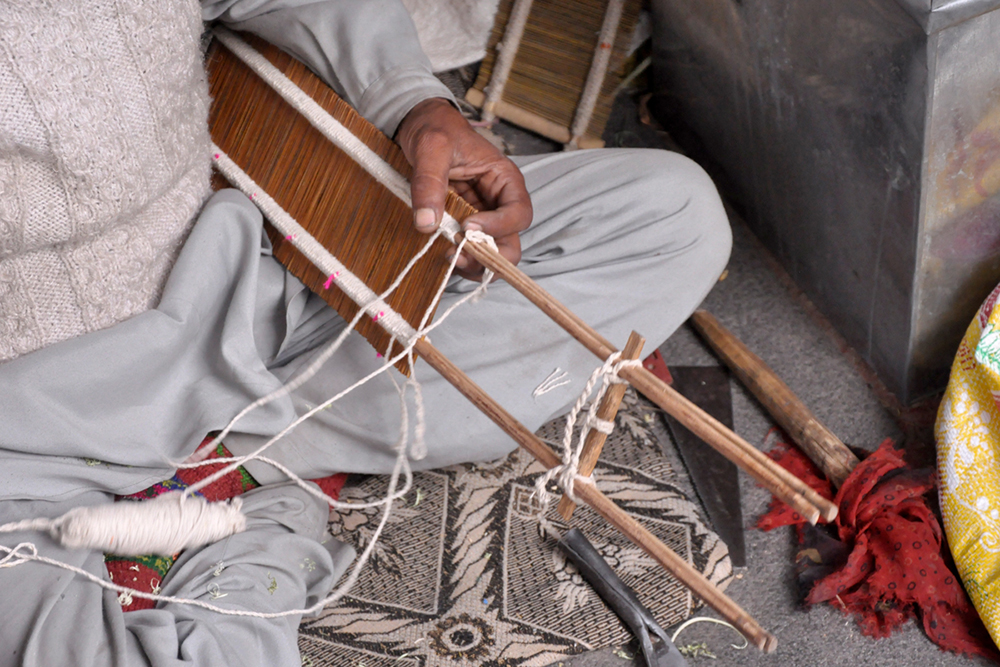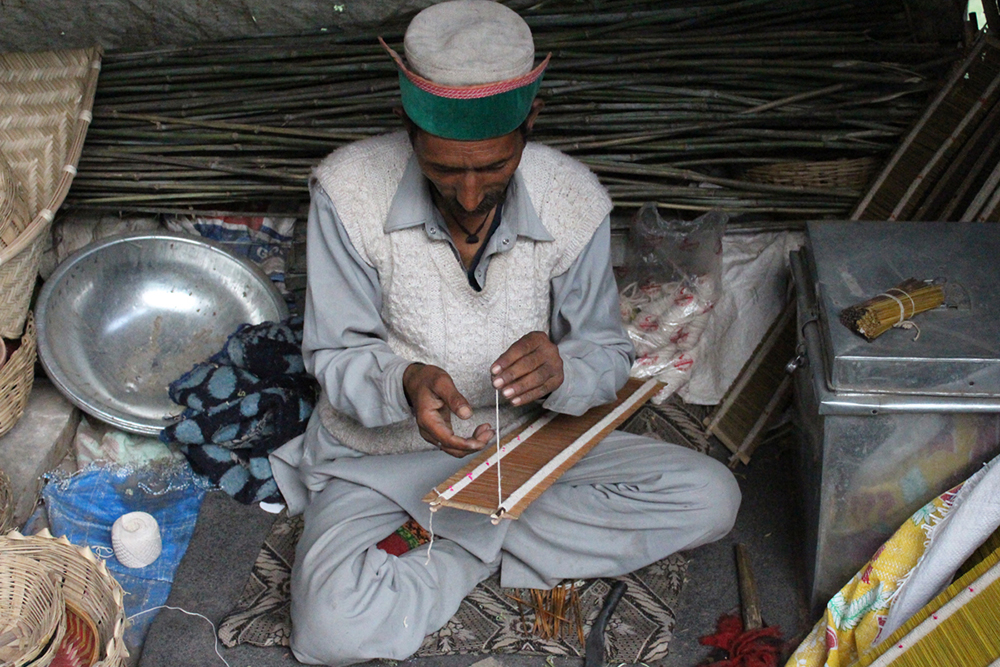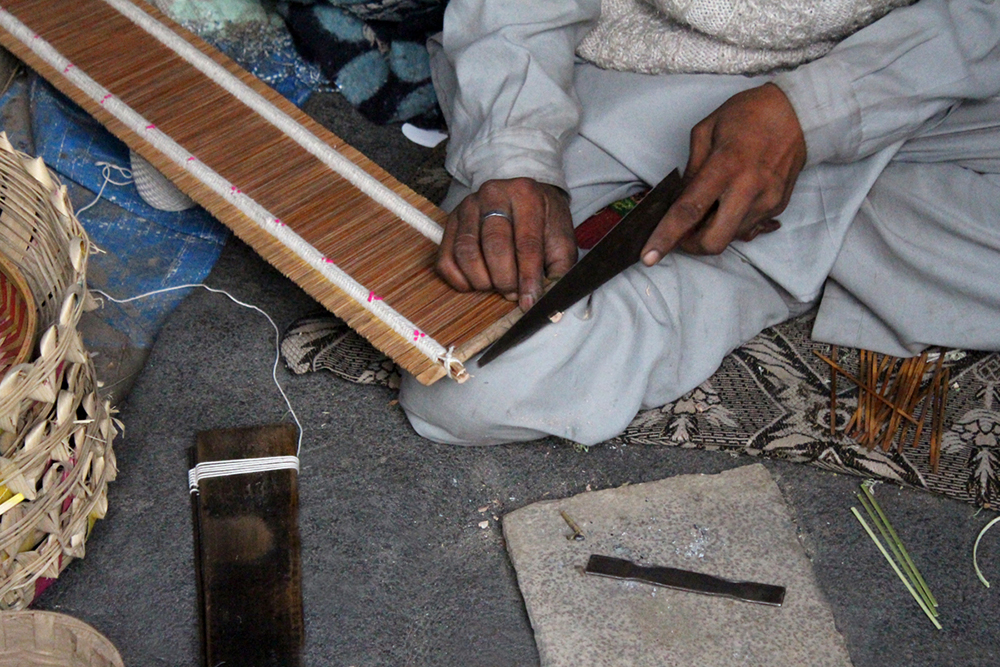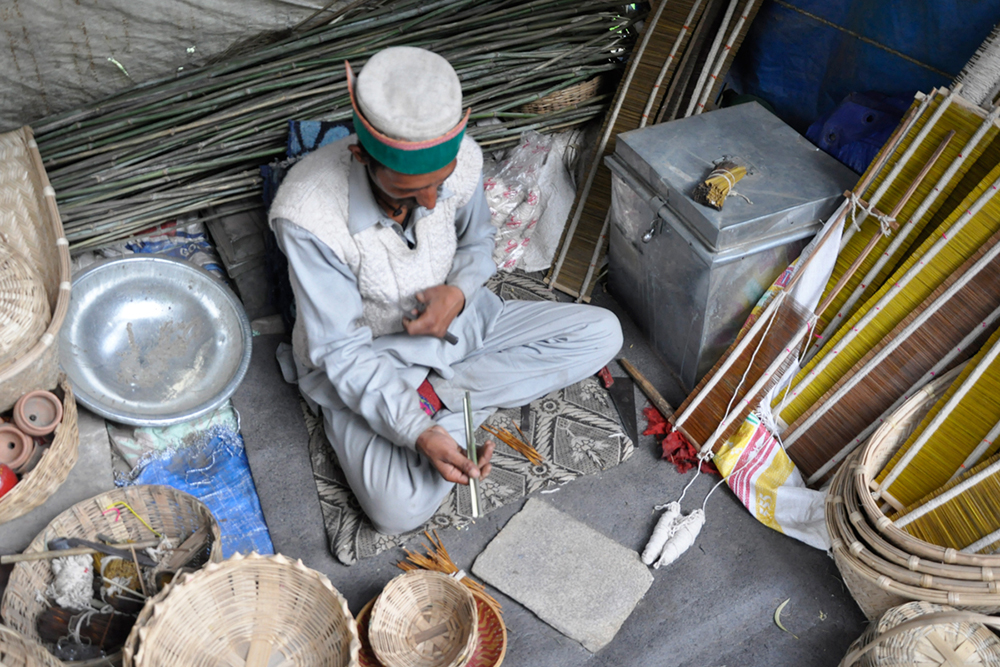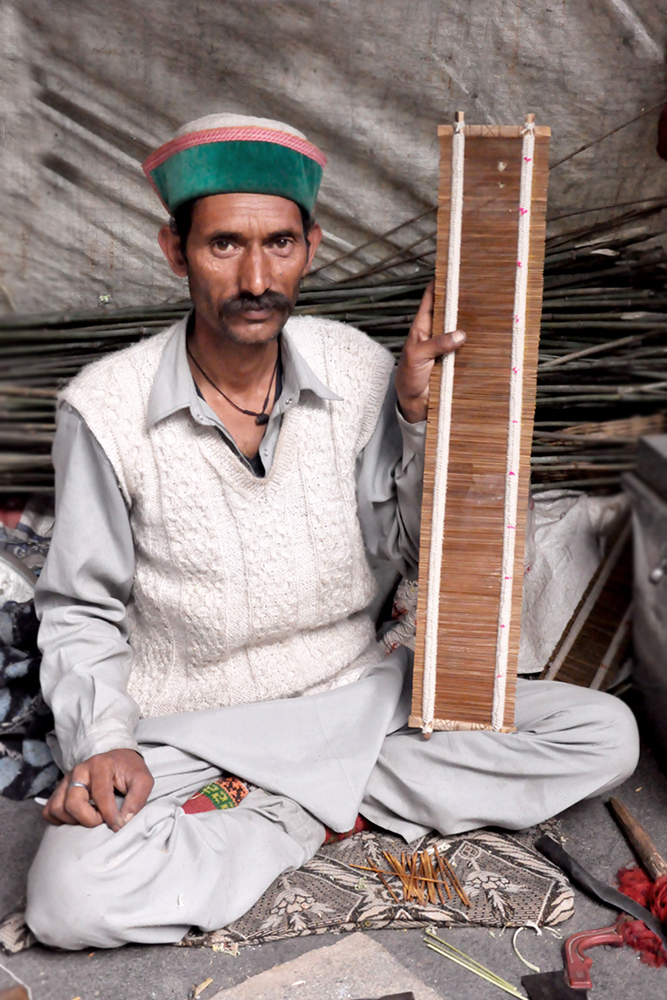Design Gallery
Making of Kanghi - Himachal Pradesh
Part of Loom
by
Himachal Pradesh is renowned for its natural beauty, hill stations, and temples. The growth and economy of the state are dependent on tourism. Beautiful Himalayan landscapes attract tourists from all over the world. Himachal handicrafts are renowned around the world. The leather works, Kullu shawls, Chamba rumals, carpets, Kangra paintings, and woodwork are some of the aesthetic handicrafts that belong to this tiny hill state. The wool weaving is necessitated by the extremely cold winters of the Himachal. Almost every household in Himachal owns a pit-loom. Both men and women have acquired the skill of weaving.
The looms contain various parts which serve a different purpose, which all put together compromises a loom. One of the parts of the Loom is the REED, which is locally known as “Kanghi”. Reed resembles a comb used to push the weft yarn securely into place as it is woven. It also separates the warp threads, holds them in their positions, keeps them untangled, and guides the shuttle as it moves across the Loom. Modern reeds are made by placing flattened strips of wire (made of carbon or stainless steel) between two half-round ribs of wood and binding the whole together with tarred string. Historically reeds were made of canes. Mr. Bhime Ram from Kullu is still making traditional type reeds known locally as Kanghi. The past three generations of his family are doing this work. Now let’s see how a conventional kanghi is made.
For more details:
https://www.dsource.in/resource/making-kanghi-himachal-pradesh













